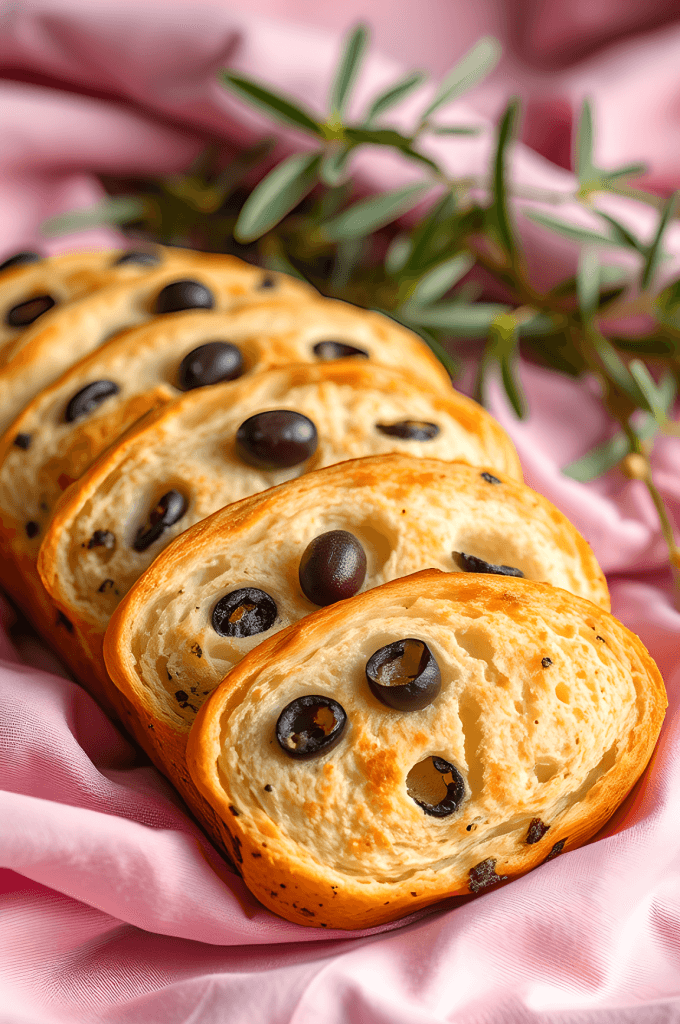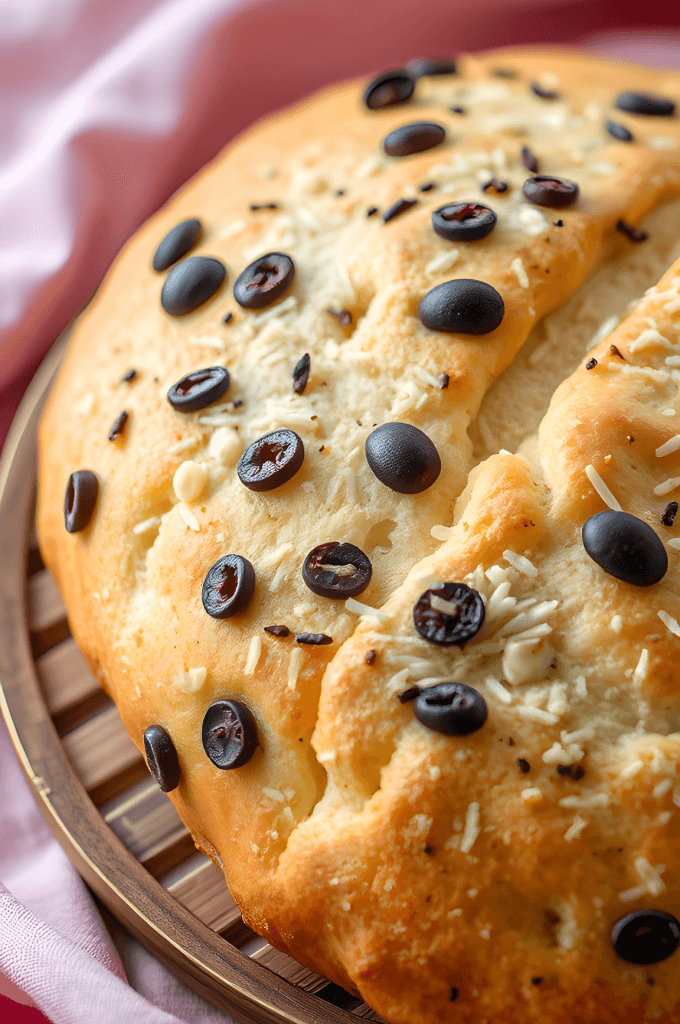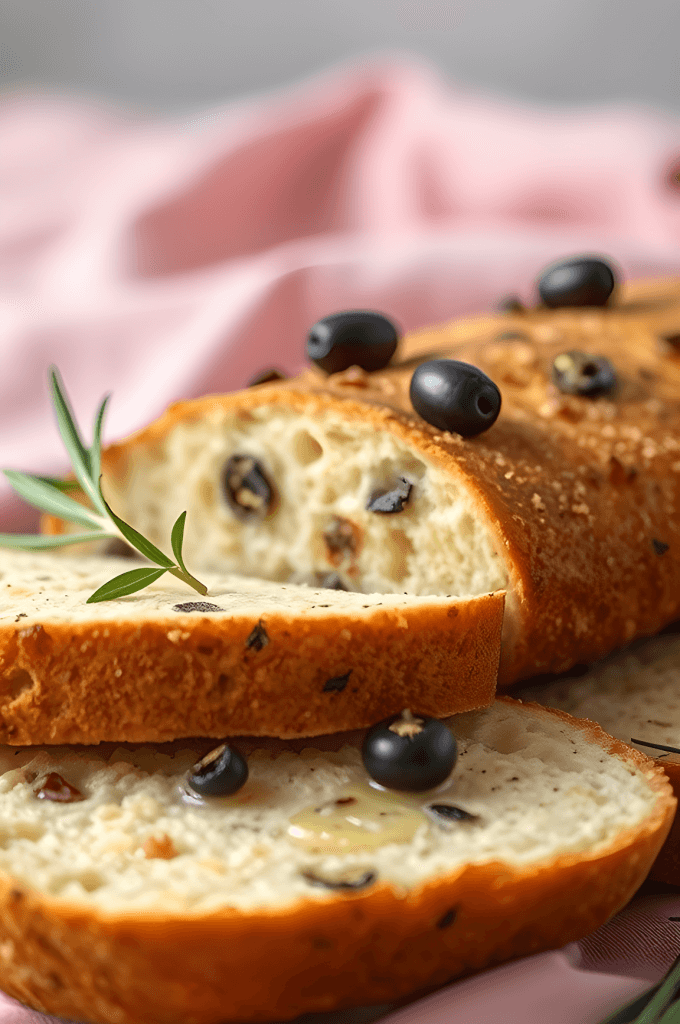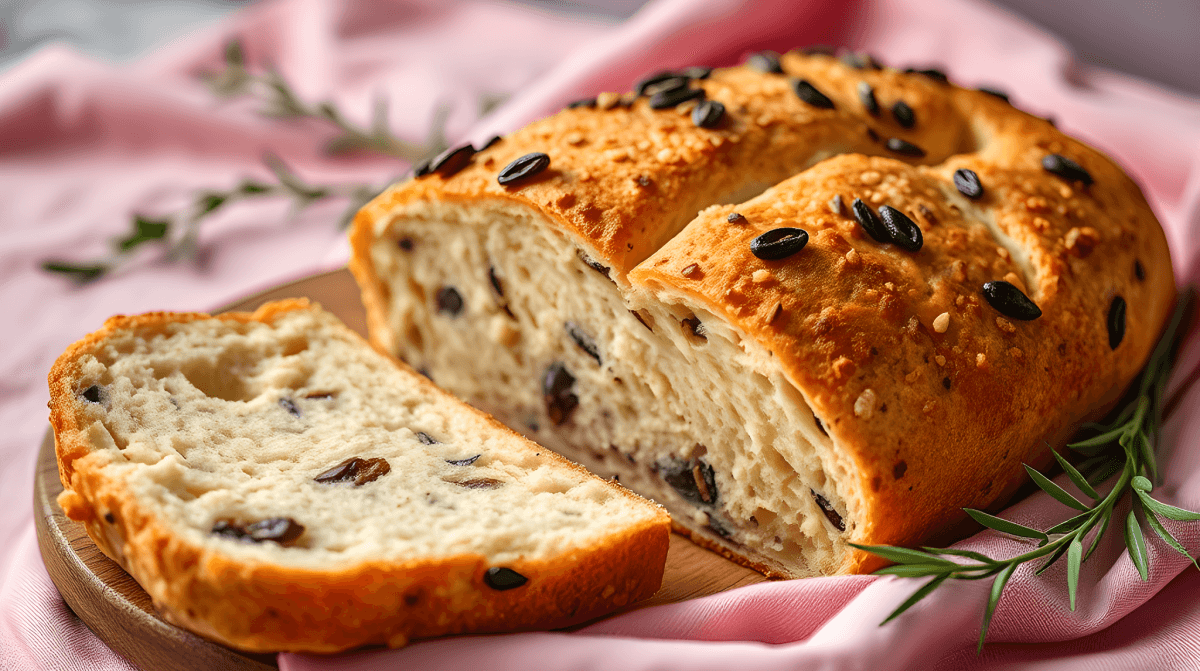Introduction
When I think of Mediterranean cuisine, I think of sun-kissed hills, olive groves, and the rich, earthy flavors that define the region’s cooking. Olive bread is one of those simple yet profoundly delicious creations that captures the essence of the Mediterranean in each bite. Made with aromatic Kalamata olives, fresh herbs, and a touch of olive oil, this bread offers the perfect balance of savory and slightly tangy flavors.
The beauty of olive bread lies in its versatility. It can be served as an accompaniment to soups, salads, or Mediterranean spreads like hummus or tzatziki. Or, you can simply enjoy it on its own with a generous smear of butter or a drizzle of olive oil.
Let’s dive into making this incredible bread, and I’ll share a bit of my own experience with how olive bread became a staple in our kitchen. My grandmother would bake this bread during the cooler months when we’d gather for hearty meals, and it quickly became a favorite for all family occasions. Today, I’m excited to share this recipe with you!
Ingredients for Olive Bread (Makes 1 Loaf)
- For the dough:
- 2 cups all-purpose flour (plus extra for dusting)
- 1 teaspoon salt
- 1 teaspoon sugar
- 1 packet (or 2 1/4 teaspoons) active dry yeast
- 1 cup warm water (about 110°F / 43°C)
- 2 tablespoons extra virgin olive oil (plus extra for greasing and brushing)
- 1 cup Kalamata olives (pitted and roughly chopped)
- 1 tablespoon fresh rosemary (finely chopped)
- 1 teaspoon garlic powder (optional, for added flavor)
- For the topping (optional):
- 1 tablespoon fresh rosemary (chopped)
- Coarse sea salt (for sprinkling)

Instructions for Making Olive Bread
Step 1: Activate the Yeast
- Start by activating the yeast. In a small bowl, combine the warm water and sugar. Sprinkle the yeast over the top and stir gently to dissolve. Let it sit for about 5 minutes, or until the mixture becomes frothy and bubbly. This means your yeast is active and ready to work its magic in the dough.
Step 2: Mix the Dough
- In a large mixing bowl, combine the flour and salt. Make a well in the center and pour in the activated yeast mixture and olive oil. Stir with a wooden spoon until the dough begins to come together.
- Tip: If the dough feels too dry, add a tablespoon of water at a time until the dough is soft and slightly tacky. You want it to be elastic but not too sticky.
Step 3: Knead the Dough
- Once the dough begins to form, turn it out onto a lightly floured surface. Knead for about 8-10 minutes until the dough is smooth and elastic. You can add a little extra flour if needed, but be careful not to overdo it, as too much flour can make the bread dense.
- Kneading Tip: To knead the dough, fold it over itself, then push it away with the palms of your hands. Turn it a quarter turn and repeat. This process helps to develop the gluten and gives the bread structure.
Step 4: Add Olives and Rosemary
- After kneading, flatten the dough into a disc. Sprinkle the chopped olives, rosemary, and garlic powder (if using) evenly across the dough. Fold the edges of the dough over the filling and continue kneading until the olives and herbs are evenly distributed throughout the dough.
- Tip: Make sure the olives are well-incorporated, but don’t overwork the dough too much. You want to keep the olives chunky for texture.
Step 5: Let the Dough Rise
- Place the dough in a lightly oiled bowl, turning it to coat with oil. Cover the bowl with a clean kitchen towel or plastic wrap, and let it rise in a warm, draft-free place for 1-2 hours, or until it has doubled in size. This step is crucial for developing the light and airy texture of the bread.
Step 6: Shape the Dough
- Once the dough has risen, punch it down gently to release any air bubbles. Turn it out onto a floured surface and shape it into a round or oval loaf, depending on your preference. Place the shaped dough onto a parchment-lined baking sheet or a greased baking pan.
- Tip: If you like a more rustic look, you can bake the bread as a freeform round. For a more uniform shape, place it in a loaf pan.
Step 7: Final Rise and Preheat the Oven
- Cover the dough again with a towel and let it rise for another 30-45 minutes. While the dough rises, preheat your oven to 375°F (190°C).
- Tip: You can also create a steam effect in the oven to make the bread’s crust extra crispy. Place a small oven-safe dish of water on the bottom rack while the bread bakes.
Step 8: Bake the Bread
- Before baking, you can optionally brush the top of the loaf with a bit of olive oil for a golden finish. Sprinkle a bit of fresh rosemary and coarse sea salt on top for added flavor and a nice visual touch.
- Bake the bread in the preheated oven for about 30-35 minutes or until the bread is golden brown on top and sounds hollow when tapped on the bottom. If you have a kitchen thermometer, the internal temperature should read 190°F (88°C).
Step 9: Cool and Serve
- Once baked, remove the bread from the oven and let it cool on a wire rack for at least 15 minutes before slicing. This resting period helps the bread set and makes slicing easier.
- Tip: Slice the bread while it’s still warm, but not too hot, for the best texture and flavor. The bread will keep for a couple of days if stored in a breadbox or wrapped tightly in a cloth.

Why Olive Bread is a Mediterranean Favorite
Olive bread is much more than just a delicious loaf – it’s a staple in Mediterranean cuisine. The combination of olives and fresh herbs creates a savory bread that’s perfect for dipping or pairing with meals. Here’s why olive bread has earned its place on tables across the Mediterranean and beyond:
- Nutrient-Rich Ingredients: Olives are packed with antioxidants, healthy fats, and vitamins, making them an excellent addition to any dish. By adding them to the bread, you’re not just getting amazing flavor but also a nutritional boost.
- Versatility: Olive bread can be served as a side to Mediterranean dishes like Greek salads, pasta, or roasted vegetables. It’s also perfect with spreads like hummus, tzatziki, or baba ghanoush.
- A Taste of Tradition: Olive bread is a traditional Mediterranean recipe that’s been passed down through generations. By baking it at home, you’re not just making a loaf of bread – you’re creating a piece of culinary history.
Olive Bread Variations
While the classic olive bread recipe is delicious on its own, there are plenty of ways to experiment with flavors and make it your own. Here are some variations to try:
- Herb-Infused Olive Bread: Add additional herbs like thyme, oregano, or basil to the dough for an extra layer of flavor. You can also use sun-dried tomatoes for a Mediterranean twist.
- Cheese & Olive Bread: Stir in crumbled feta or Parmesan cheese along with the olives. The salty, creamy cheese pairs wonderfully with the tangy olives for an unforgettable bread.
- Spicy Olive Bread: Add a pinch of red pepper flakes or finely chopped chili peppers to the dough for a touch of heat. This variation works well if you want to pair the bread with spicy dips or Mediterranean dishes.
- Gluten-Free Olive Bread: To make this recipe gluten-free, substitute the all-purpose flour with a gluten-free flour blend. Be sure to check the flour’s instructions for best results when baking.
Tips for Perfect Olive Bread
- Use Good Quality Olives: The key to great olive bread is using high-quality olives. Opt for Kalamata olives, which have a rich, slightly tangy flavor that enhances the bread.
- Kneading is Key: Proper kneading helps develop the gluten and gives the bread structure. If the dough is too sticky, don’t hesitate to add a little more flour.
- Don’t Skip the Resting Time: The rising time is essential for achieving the perfect texture. Be patient and let the dough rise to develop flavor and lightness.
- Oven Steam: To get a beautiful crust, add a pan of water to the oven during baking. The steam will keep the bread’s crust soft during the initial baking and give it a golden finish as it cooks through.

Conclusion: Olive Bread for Every Occasion
There’s something special about homemade olive bread. It’s warm, savory, and aromatic with just the right amount of tang from the olives and depth from the olive oil. Whether you’re hosting a dinner party or simply enjoying a quiet meal at home, this bread will elevate any dish it accompanies.
So, the next time you’re in the mood for a Mediterranean-inspired bread, give this olive bread recipe a try. It’s easy, rewarding, and will quickly become a staple in your baking repertoire. Happy baking!

